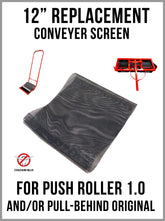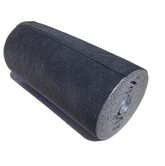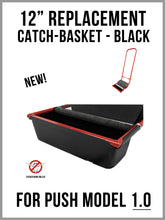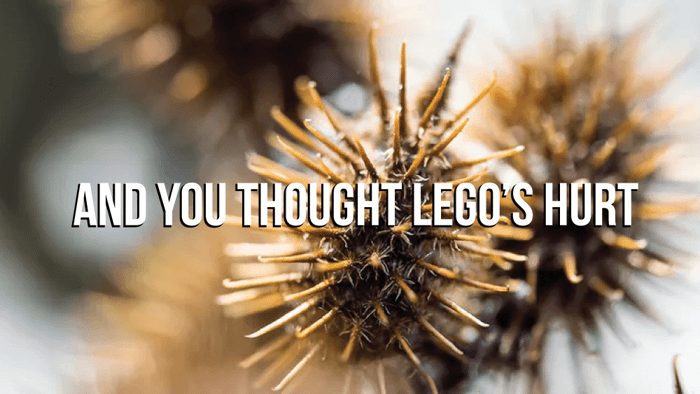The Dos and Don’ts of Removing Sand Spur Stickers (Part 1)
Sand spurs are one of the most frustrating weeds for homeowners, turning an otherwise enjoyable lawn into a minefield of painful stickers. Whether you’re dealing with these prickly nuisances for the first time or have been battling them for years, it's essential to understand what works—and more importantly, what doesn’t—when it comes to removal.
This two-part series will cover the common misconceptions about sticker removal and, in the next article, provide the most effective strategy for eliminating them for good.
Table of Contents
- The Issue with Sticker Home Remedies
- What is the Origin of Stickers?
- Ineffective Internet Guidance:
- Moving a Carpet Over Your Lawn
- Setting Your Lawn on Fire
- Cutting the Grass Short and Gathering Clippings
- Dragging Them
- Roto-Tilling
- Installing New Sod
- The Best Method for Eliminating Sand Spurs
The Issue with Sticker Home Remedies
These prickly weeds are a menace to adults, children, and pets alike. Commonly called "stickers," they usually appear alongside an exasperated sigh or a few choice words. If you've ever stepped on one barefoot, you understand the sheer pain they cause. Worse still, they cling to dog paws, children's clothes, and lawnmower tires, spreading even further and turning your yard into a war zone.
The real problem isn’t just their sharp spikes—it’s their persistence. These weeds are incredibly resilient and thrive in areas where grass struggles. Without the proper approach, they can linger in your yard for years, continuously sprouting and spreading.
If you've searched online for home remedies, you’ve likely come across a variety of DIY solutions. Unfortunately, most of them fail for one or more of the following reasons:
- They are extremely time-consuming
- They provide only temporary relief
- They often make the problem worse in the long run
If you’ve already tried and failed with these ineffective methods, don’t worry! In this post, I’ll explain why these common approaches don’t work and what you should do instead.
Why Are Sand Spurs So Difficult to Remove?
Before we discuss ineffective solutions, let's take a closer look at why these weeds are so hard to get rid of in the first place.
What Makes a Perfect Home for Sand Spurs?
They thrive in sandy, nutrient-poor soil—ironically, the same kind of soil that supports many lawn grasses. This makes them a common invader in yards, pastures, and even playgrounds.
I remember a playground in Lake Eufaula from my childhood, where the combination of dry soil and unmaintained grass created a paradise for stickers. The result? My feet were constantly covered in them, an experience most Oklahomans can relate to.
These weeds are commonly found in newer housing developments where the soil hasn’t been properly enriched. Even in well-established neighborhoods, they are a problem in regions with sandy soil, such as Choctaw, Harrah, Newalla, Jones, and Northeast Edmond. Canadian County—including Mustang, Yukon, and Piedmont—is another notorious hotspot.
The Real Challenge: The Seed Factor
Sand spurs are not just annoying weeds; they are also seeds. Once they take root, they can continue growing for years, even if you make progress in removing some of them. This means that even after tackling the visible plants, countless seeds could be lurking beneath the soil, ready to sprout at any moment.
Your goal should be to change the soil conditions to make your lawn less hospitable to these weeds—without harming the grass.
Ineffective Internet Guidance on Sand Spur Removal
If you've searched for ways to remove them, you've likely encountered some questionable advice. Below are six of the worst home remedies people swear by—but that actually do more harm than good.
1. Moving a Carpet Over Your Lawn
One popular DIY method involves dragging an old carpet upside down across the lawn, hoping that the spiky burs will stick to it and be removed.
Why it doesn’t work:
While this method may collect some burs, it ultimately does more harm than good. The seeds get redistributed across your lawn, often landing in areas that were previously unaffected. You might feel satisfied seeing stickers stuck to the carpet, but all you’ve really done is spread them further.
2. Setting Your Lawn on Fire
Burning your lawn to remove sand spurs sounds extreme, but some people swear by it. Since they thrive in dry conditions, it seems logical that fire would eliminate them.
Why it doesn’t work:
While burning does destroy the visible plants, it does not kill the seeds hidden beneath the soil. The seeds have a tough outer shell, allowing them to withstand extreme temperatures. Unless you can create blast-furnace-level heat across your entire lawn, many will survive and sprout later. Worse still, a burned lawn creates the perfect environment for more growth before grass can reestablish itself.
3. Cutting the Grass Short and Gathering Clippings
Many people believe that mowing the lawn as short as possible will stop seed production.
Why it doesn’t work:
While mowing can reduce seed formation, it doesn’t eliminate sand spurs. Some plants can produce seeds at just one inch tall! Even if you bag the clippings, plenty of seeds will remain in the soil, ready to sprout again.
4. Dragging Them by Hand
Some people opt for pulling stickers by hand, believing that removing the visible plants will fix the problem.
Why it doesn’t work:
Picking them manually is nearly impossible because the seeds spread so easily. The moment a bur falls to the ground, it’s ready to germinate. Even if you remove hundreds of plants, you’ll never get every single seed, and the problem will persist.
5. Roto-Tilling
Roto-tilling breaks up the soil and buries surface weeds. While this might seem like a smart move, it’s actually one of the worst things you can do.
Why it doesn’t work:
Since sand spurs are seeds, burying them helps them grow. Seeds thrive when they’re planted in the soil, and roto-tilling spreads them even deeper, ensuring a worse infestation next season.
6. Installing New Sod
Laying fresh sod sounds like a great way to get rid of weeds—but not if you skip the crucial step of removing existing sand spurs first.
Why it doesn’t work:
If you install sod over an infested lawn, the seeds will grow through the new grass, ruining your investment.
The Best Method for Eliminating Sand Spurs
If you’ve spent time, money, and effort on these ineffective solutions, you’re not alone. Many homeowners struggle because they don’t have the right information.
The good news? There is an effective way to eliminate sand spurs permanently.
In the next article, Lawn Sand Spur Stickers: The Ultimate Way to Deal with Sand Spurs, I’ll outline the best approach to removing them once and for all.
Need Help Now? Contact the Experts!
If you don’t want to spend another summer battling stickers, Sticker Burr Roller has state-of-the-art solutions to eliminate them for good. Our professional team has a proven method to clear your lawn of sand spurs and help you grow the lush, sticker-free lawn you’ve always wanted.
Contact us today for a consultation and say goodbye to sand spurs once and for all!









